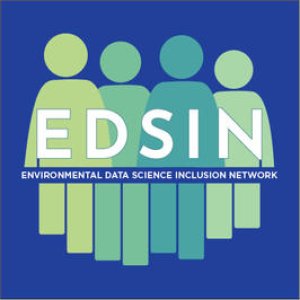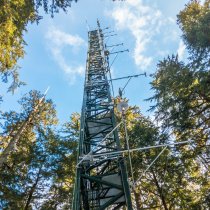Building Diversity, Equity and Inclusion in Environmental Data Science
October 9, 2019
The environment impacts every single one of us. But historically, we haven't all had equal opportunity to be involved in the data collection and analysis that informs our understanding of the environment and drives environmental policy.
That's why Battelle and the NEON program teamed up with QUBES and 11 other partners for a three-day conference in Boulder, Colorado in April 2019. Bringing Conversations on Diversity, Equity, and Inclusion in Data Science to the Environmental Sciences brought together stakeholders from academia, government, non-profits and business to discuss strategies for increasing minority representation in data science and environmental science fields. It resulted in the development of EDSIN (the Environmental Data Science Inclusion Network), a QUBES community dedicated to supporting inclusion and diversity in the data sciences.
The Growing Role of Data Science in Ecology and Environmental Science
"Big data" is transforming nearly every aspect of science and technology, and the environmental sciences are no exception. Continental-scale initiatives like the National Science Foundation’s NEON program generate huge amounts of open access environmental data from in situ sensors, remote sensing instruments and field observations. The availability of these datasets opens up opportunities to look for correlations and trends across broad temporal and spatial scales in ways never before possible.
Extracting meaningful information out of these data requires new skillsets and methods that have not traditionally been part of the biology or ecology curriculum. That's where QUBES comes in. Founded in 2014 through a National Science Foundation (NSF) grant, QUBES is dedicated to bringing the data sciences to biology and environmental science. They have created a wealth of free resources for the post-secondary community to help professors integrate cutting-edge quantitative methods and data science tools into their classrooms.
Dr. Carrie Diaz Eaton, the QUBES Consortium Director and an Associate Professor of Data Science at Bates College, explains, "Our mission is to prepare the future STEM workforce with the knowledge and skills they need to use these new data science tools and methods. The intersection of data science with biology and environmental science is where a lot of tomorrow's most interesting discoveries will be made. These tools allows us to move beyond the traditional hypothesis-driven paradigm and look at complex problems in different ways."
As the data sciences become more integrated into biology and ecology, it will be important to ensure that all students have equal opportunities to access training and use these tools in their research. Currently, people of color, women and people with disabilities are underrepresented in the data sciences. This means they may be missing opportunities to engage with cutting-edge research and methods in biology and ecology. EDSIN is trying to change that.
A Diverse and Inclusive Conference (Both Online and Off)
The EDSIN conference grew out of discussions between NEON program staff and QUBES and was funded through a grant from the NSF INCLUDES program. Carrie and Dr. Alycia Crall, a Research Scientist at NEON, served as co-organizers. Alycia, who is responsible for planning and evaluation for community engagement projects at NEON, says, "One of our goals was to reach out to different groups and find out what is already happening in this space. There are a lot of great programs, but no one was really aware of each other's efforts. We wanted to provide a space for collaboration between groups and organizations that we will all be able to build on moving forward."
The conference attracted more than 100 attendees, including professors, social scientists, students, trainers and business partners. Many others participated remotely. Appropriately for a conference focused on inclusion, the conference organizers provided ample opportunities for people to engage through social media, webcasts and other electronic channels, whether they were attending the conference in person or from the comfort of home. The NSF grant paid for the conference as well as travel expenses for attendees.
The programming included seminary lectures, poster presentations and "lightning rounds" where participants could share their work. They also had a number of "unconference" breakout sessions, which were seeded with open-ended discussion questions or had agendas determined onsite using online polls. Carrie says, "This allowed conversations to be very nimble, so we could give voice to more people and leave flexibility to address topics that came up over the course of the conference."
Conference attendees tackled complex and sometimes difficult topics, including the experience of minority researchers in traditionally "white spaces," recruiting and retaining indigenous students in the environmental sciences, and barriers to participation for students and scientists with disabilities. In the words of Pam Bishop, an attendee from the National Institute for STEM Evaluation and Research, "The EDSIN conference was a warm, welcoming space where I felt free to discuss real issues related to programs and projects aimed at broadening participation without the fear of judgment or retribution."
Why Representation Matters in Environmental Sciences
The conference opened an invaluable discussion on diversity and inclusion in the sciences, but much work remains to be done. EDSIN has created a number of working groups to provide opportunities for continued collaboration.
Bringing a wider set of voices to ecology and environmental sciences will be important as society grapples with complex challenges related to climate change, land use and the spread of invasive species and pathogens. "Analysis of these large data sets and the policies that are driven by them have profound societal implications,” says Alycia. “We need to make sure that we have diverse perspectives in the field so that these data are serving everyone."
James Rattling Leaf, a participant from the Sicangu Lakota Tribe, says, "To maintain cultural continuity and to show up for common causes with our diversity intact, the most we can hope for is to practice cultural intelligence, intercultural skills, tolerance for the ‘other’, mutual respect and peaceful co-existence. Throughout human history, these elements have been missing."
QUBES, NEON, and other EDSIN collaborators are all committed to continuing to find ways to open doors to environmental data sciences for underrepresented students. For example, collaborations with institutions such as Historically Black Colleges and Universities, community colleges, and other programs serving minority students could broaden participation in data sciences and ecology. As Carrie says, "I feel like the conversation just started. There is still so much work to be done."
Next Steps with EDSIN
A follow up meeting of EDSIN members will be occurring at Spelman College on March 24 and 25, 2020. To learn more about ongoing activities and to engage with the network, you can visit EDSIN online where there are collated resources on inclusion in the Collections area and member forums to find a collaborator or new funding opportunities. You can also contribute to the future of EDSIN by joining a working group.

Field technicians working at different NEON sites
Did you know NEON hires hundreds of early career scientists each year and trains them to collect NEON data from field sites across US ecosystems? This unique experience is a fantastic stepping stone for your ecology career path. Learn more.

